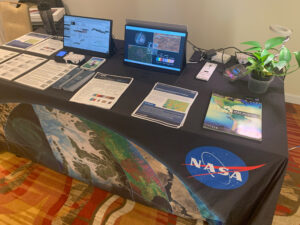
Ted Scambos, NSIDC Lead Scientist (and Landsat Science Team Member)
Press Conference
2:30 p.m., Press Conference Room, Moscone West, Room 3000, Level 3
At the coldest spots on Earth, every breath is painful. Clothing crackles and hot water tossed into the air falls to the ground as tiny shards of ice. But how cold can it possibly it get on Earth’s surface? Where are these bitterly cold places, and what sort of weather brings on the record-breaking cold? Ted Scambos, Lead Scientist for the National Snow and Ice Data Center, will present new measurements of Earth’s coldest temperatures, based on information from the new USGS-NASA Landsat 8 satellite, the Advanced Very High Resolution Radiometer (AVHRR) on the NOAA series of satellites, and the Moderate Resolution Imaging Spectroradiometer (MODIS) on NASA’s Terra and Aqua satellites. NASA’s James Irons will provide an overview of the unique features of this eighth Landsat mission and the new insights researchers hope to gain.
Journalists please note that during the press panel and poster session, Scambos will present new information, updated from his team’s original abstract.
Further Information:
+ NSIDC science at AGU highlights Landsat 8, Arctic sea ice, Antarctic ice shelves, snow cover, and permafrost carbon feedback

Landsat & LCLUC: Science Meeting Highlights
Outreach specialists from the Landsat Communications and Public Engagement team participated in community engagement efforts at the joint NASA and University of Maryland Land Cover Land Use Change (LCLUC) meeting.





